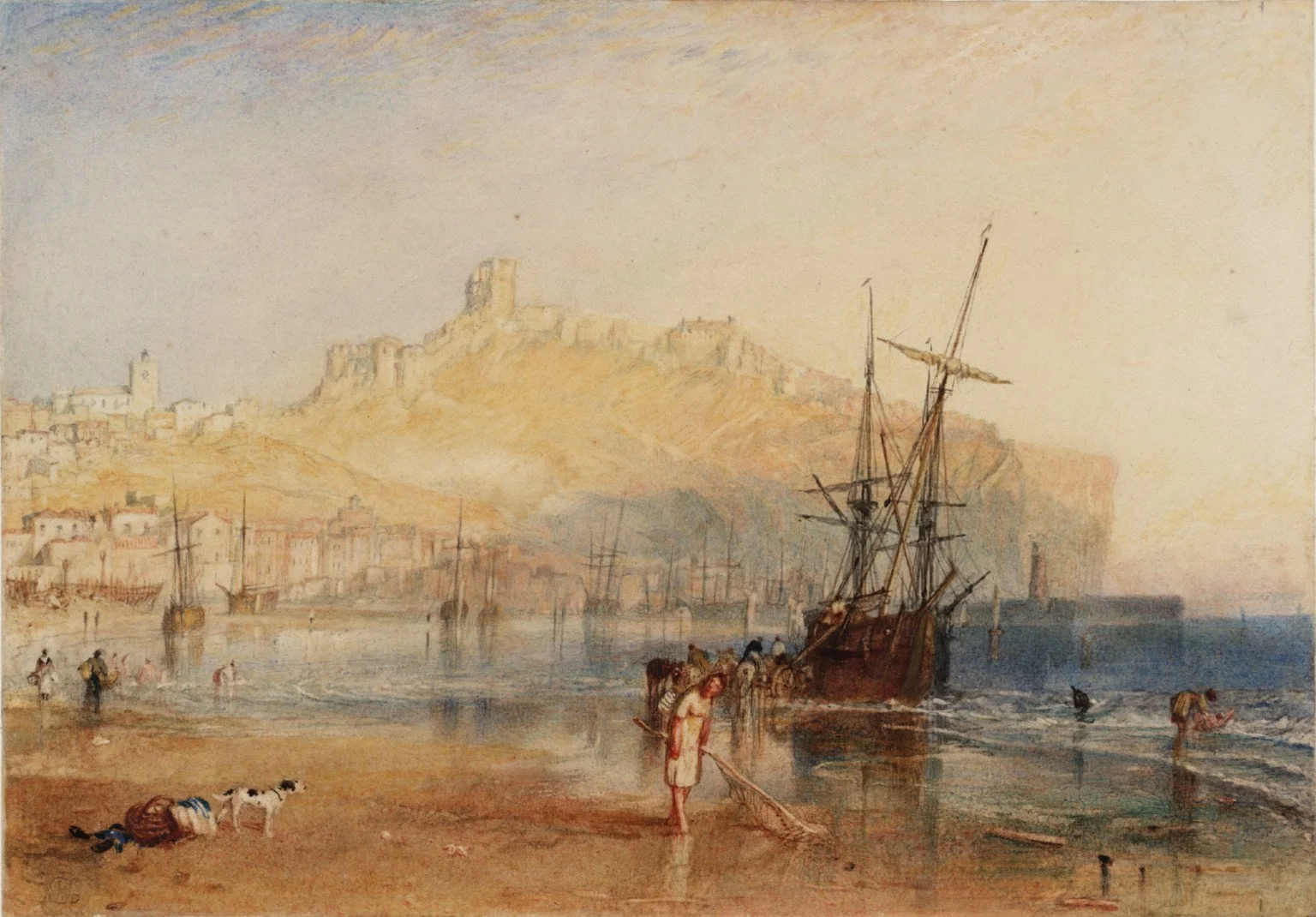Exploring Turner's Captivating Use of Light and Colour
Scarborough c.1825 Watercolour and Graphite
Joseph Mallord William Turner, often hailed as the "Painter of Light," was a master at harnessing the transformative power of light and colour in his artworks. Born in 1775 in Covent Garden, London, Turner's revolutionary approach to painting revolutionized the art world and continues to captivate audiences worldwide.
The Power of Light: Turner's keen observation of light and its effects on the natural world formed the cornerstone of his artistic practice. He understood that light could dramatically alter the mood and atmosphere of a scene, imbuing it with a sense of drama and emotion. In his landscapes, Turner depicted the interplay of light and shadow with unparalleled sensitivity, capturing the fleeting beauty of dawn, the brilliance of sunset, and the ethereal glow of moonlight. His mastery of chiaroscuro—the use of light and dark contrasts—created a sense of depth and dimensionality that drew viewers into his paintings.
Storm Clouds, Looking Out to Sea 1845 from the Ambleteuse and Wimereux sketchbook_Watercolour
The Palette of Colour: Turner's use of colour was equally revolutionary, as he employed bold, vibrant hues to evoke emotional responses from viewers. He experimented with a wide range of pigments, often layering translucent glazes to create luminous, jewel-toned effects. From the fiery reds of a sunset to the cool blues of a tranquil seascape, Turner's palette reflected the kaleidoscope of colours found in nature. His bold use of colour challenged traditional notions of realism, inviting viewers to experience the world through his unique artistic lens.
Venice: Looking across the Lagoon at Sunset 1840
Watercolour on Paper
Creating Atmosphere and Mood: In Turner's hands, light and colour were not merely elements of visual representation but powerful tools for conveying atmosphere and mood. He used light and colour to evoke a sense of awe, wonder, and contemplation, transporting viewers to worlds both familiar and fantastical. Whether capturing the fury of a storm at sea or the tranquility of a misty morning, Turner's paintings are imbued with a sense of poetry and emotion that transcends mere observation.
Nant Peris, Looking towards Snowdon 1799–1800
Graphite and watercolour on paper
References:
Tate Britain - J.M.W. Turner Collection: https://www.tate.org.uk/visit/tate-britain/display/bp-spotlight-jmw-turner
National Gallery - J.M.W. Turner Biography: https://www.nationalgallery.org.uk/artists/joseph-mallord-william-turner
The Metropolitan Museum of Art - J.M.W. Turner Overview: https://www.metmuseum.org/toah/hd/trnr/hd_trnr.htm
The J.M.W. Turner Society: https://www.turnersociety.org.uk/
J.M.W. Turner on Wikipedia: https://en.wikipedia.org/wiki/J._M._W._Turner
David Blayney Brown, ‘Draughtsman and Watercolourist’, in David Blayney Brown (ed.), J.M.W. Turner: Sketchbooks, Drawings and Watercolours, Tate Research Publication, December 2012, https://www.tate.org.uk/art/research-publications/jmw-turner/david-blayney-brown-draughtsman-and-watercolourist-r1132588, accessed 22 March 2024
Turner's captivating use of light and colour continues to inspire artists and art lovers alike, reminding us of the profound impact that art can have on our perception of the world. Through his innovative techniques and visionary approach, Turner remains a guiding light in the history of art.




